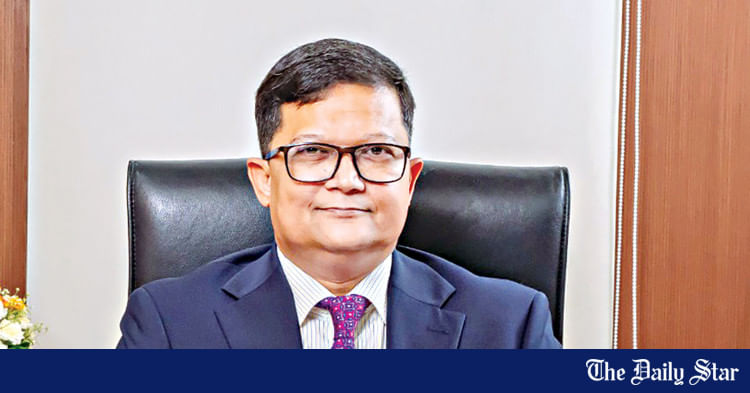Tareq Refat Ullah Khan, Managing Director and CEO, BRAC Bank PLC.
The real estate market in Bangladesh is undergoing significant change: urbanization, a growing middle class and evolving financial landscape are changing demand. BRAC Bank's comprehensive range of home loan solutions is designed to meet diverse customer needs, from buying to building to renovating homes. They value accessible financing with competitive interest rates, flexible repayment terms and tailored products.
The Daily Star (TDS): What trends are you seeing in the demand for home loans or construction finance in the last two to three years?
Tareq Refat Ullah Khan (TRUK): BRAC Bank has seen sustained demand in recent years. Rapid urbanization has been a major catalyst that has expanded real estate activity beyond Dhaka and Chattogram to emerging urban centers across the country. The growing middle class, driven by the desire for home ownership, has increasingly turned to formal banking channels for financing, attracted by trustworthy service and competitive interest rates. We have also seen a gradual shift from individual houses to apartments, especially in metropolitan areas such as Dhaka, Chattogram, Sylhet and Rajshahi, as property prices continue to rise.
A new trend that is gaining momentum is group living, in which customers jointly purchase shares of property and develop residential buildings together. This evolving demand requires innovative financing solutions to support collective ownership and promote social inclusion. Developers are also responding by focusing on condo-style projects that make better use of urban space.
TDS: How do interest rate movements and regulatory changes affect residential property or construction projects?
TRUCK: Home loans are long-term products and are therefore very sensitive to interest rate fluctuations. The recent phase of increased interest rates has significantly dampened demand as borrowing costs remain high at many banks and NBFIs.
Additionally, regulatory restrictions such as the current loan-to-value limit of 70% for creditworthy borrowers and the maximum loan limit of BDT 2 crore have hampered market growth. These factors combine to limit affordability and deter potential homeowners.
TDS: What products or programs (e.g. green home loans, housing finance for women, financing for SME developers) are gaining traction?
TRUCK: Affordable housing is emerging as a significant growth segment with increasing demand from middle-income families, young professionals and underserved households in suburban and peri-urban areas. A promising new model is group or cooperative living, in which communities work together to develop housing clusters. This approach reduces unit costs, promotes infrastructure sharing, and makes homeownership more accessible.
Demand is also growing beyond major cities as land and construction costs in Dhaka and Chattogram push buyers to smaller cities. BRAC Bank’s “TARA Home Loan” aims to enable women to purchase a home and achieve financial independence through formal financing.
TDS: How does the bank support sustainable or smart housing projects?
TRUCK: At BRAC Bank, sustainability is deeply embedded in our lending philosophy and not just a corporate commitment. We actively develop framework conditions to promote green and intelligent living through policy orientation and innovative financing solutions. Digital transformation plays a central role on this path. Home loans are being redesigned to provide faster, more transparent and greener experiences. Significant investments in digital infrastructure will soon enable customers to apply for loans seamlessly and with minimal documentation through our website.
TDS: How do you see the development of urban and semi-urban housing demand?
TRUCK: The demand for housing in Bangladesh is steadily growing beyond the major metropolises into semi-urban and peri-urban areas. In cities like Dhaka and Chattogram, rising land prices and limited space have pushed many middle-income buyers to nearby districts like Gazipur, Narayanganj, Savar and Cumilla, where properties continue to be more affordable and infrastructure is improving rapidly.
TDS: Are there any innovative partnerships or digital solutions that have made real estate financing easier?
TRUCK: Innovation and partnerships are at the core of our real estate financing strategy. BRAC Bank is driving digital solutions to simplify borrowing and increase access to home loans. Our Astha app, which now serves over 10 lakh users, offers a full range of digital banking features. We are developing a fully digital lending system that allows customers to apply for a home loan online with minimal paperwork. We also plan to leverage data analytics and alternative credit scoring tools to support first-time borrowers and underserved borrowers.
TDS: How do you see the real estate market in 2025-2026 and how is your bank positioning itself to support this growth?
TRUCK: The outlook for Bangladesh's real estate market in 2025-26 is cautiously optimistic. As inflation stabilizes and economic confidence returns, demand for affordable and mid-range housing is expected to increase. A growing number of young professionals and increasing semi-urban development will continue to drive this dynamic. BRAC Bank is strategically positioning itself to capitalize on this growth by offering tailored real estate loan products to various segments including salaried professionals, women borrowers, freelancers and NRBs.
